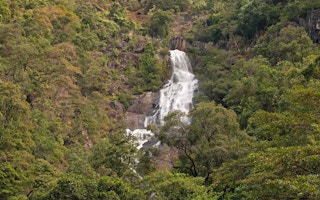The northeastern Australian state of Queensland is home to lush tropical forests, unique wildlife, and rivers that feed into the largest reef system in the world.
But researchers write that Queensland’s wilderness is under increasing strain, with data showing a big ramp-up in deforestation over the last two years.
In total, satellite data compiled and analysed by the Queensland Government indicate more than 296,000 hectares of woody vegetation (ranging from very sparse woodland to dense forest) was lost in the state between 2013 and 2014. This number is up nearly 400 per cent from 2009-2010, which saw around 77,500 hectares lost, according to the data.
Scientists from the University of Queensland and other Australian institutions responded to the findings in an article published last week in The Conversation, an academic and research online news source.
They write that much of this clearing is the result of pasture expansion, and is occurring despite ambitious restoration goals in greater Australia.
“There’s a strong rural lobby in Queensland that’s simply grown accustomed to clearing lots of land,” Bill Laurance, a research professor at James Cook University and co-author of the article, told Mongabay.
“They feel entitled to do this, as though it’s their traditional right. According to them, nobody—especially the government—is going to tell them what to do.”
“For example, the Queensland Parliament recently passed an ill-advised resolution opposing any changes to Queensland’s land-clearing laws. This resolution was led by Bob Katter, the Katter Party and the [Liberal National Party], whose positions on these issues are fairly notorious, at least among Queensland’s environmental scientists.”
This escalating deforestation, write Laurance and his colleagues, is counteracting the effects of federal environmental protection programs.
They estimate that in just one year of clearing, more trees were felled in Queensland than the 20 million Australia plans to plant by 2020; and in two years of clearing, more carbon was released from deforestation than the country’s Emissions Reduction Fund has been able to offset in industry abatements.
Yet, according to Laurance, Australia’s federal government doesn’t seem to be doing much of anything to stem the clearing of Queensland’s native flora.
“It either doesn’t seem to be on their radar, or they actually favour the current land-clearing rules, which are promoting an escalation of forest and bushland clearing across Queensland,” Laurance told Mongabay.
The areas under conversion pressure provide habitat to around 200 threatened plant and animal species. In particular, Laurance points to koalas (Phascolarctos cinereus), which are dependent on Australia’s eucalypt forests and have by declined by 50 percent in parts of Queensland over the past 20 years due primarily to land clearing.
Queensland’s land clearing isn’t affecting just terrestrial habitat. It is also disturbing the rivers that flow out to the Great Barrier Reef, a UNESCO World Heritage Site and the planet’s largest reef system home to 400 types of coral and 1,500 species of fish.
When vegetation is removed from near rivers, the soil once held in place by plant roots is more likely to erode into the water. This can harm rivers and reef ecosystems that haven’t evolved to handle high levels of sediment. In addition, herbicides, pesticides, and fertilizer also get washed into streams and find their way to the ocean.
The threats to the Great Barrier Reef posed by agricultural runoff were significant enough to prompt a lengthy report on the issue by the Queensland Audit Office last year.
“The recent relaxation of land clearing rules also increases the risk of adverse consequences from sedimentation run-off, and could work against the achievement of Reef Plan water quality targets,” the report states.
It adds that the situation could be improved with better management and more accountability, which “has not existed under the governance arrangements to date.”
Whether or not Queensland will reform its environmental policies is a matter of hot debate right now. Current State Premier Annastacia Palaszcuk promised stronger protections for native vegetation during her campaign, and a bill on this issue is expected to be introduced to parliament in the next few weeks. However, this does not necessarily mean change is in the air.
“The situation seems to be sitting on the edge of a knife, to paraphrase a famous line in ‘The Lord of the Rings’,” Laurance said. “The Palaszczuk Government actually needs the votes of two independents right now in order to pass the reformed rules, and no one is sure whether or not they’ll be able to get that critical support.
“Of course, as veteran environmental scientists in Queensland, we very much hope the Palaszczuk Government pulls out all the stops to halt this really alarming situation.”
This story was published with permission from Mongabay.










